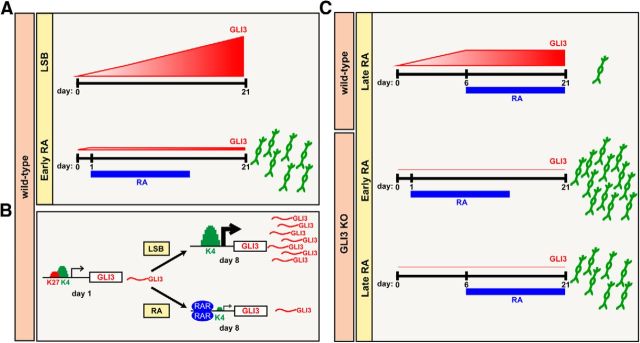Figure 10.
Schematic illustration depicting mechanism by which patterning with RA enables efficient MN derivation via GLI3 suppression. A, Upregulation of GLI3 transcript levels during neural induction restrict competency toward the MN lineage. RA suppresses GLI3 to levels comparable to those expressed at pluripotency when initiated early during neural induction, enabling high MN yields from hPSCs in the absence of extrinsic SHH activation. B, Early RA treatment modulates GLI3 expression by inducing RAR binding at the GLI3 promoter and preventing the chromatin switch from a bivalent to active state. C, RA exposure initiated at later neural stages is not capable of returning GLI3 levels back to baseline, and these elevated levels act like a “brake” on MN specification. Removal of this “brake” via GLI3 knock-out extends the window of competency for MN specification.

